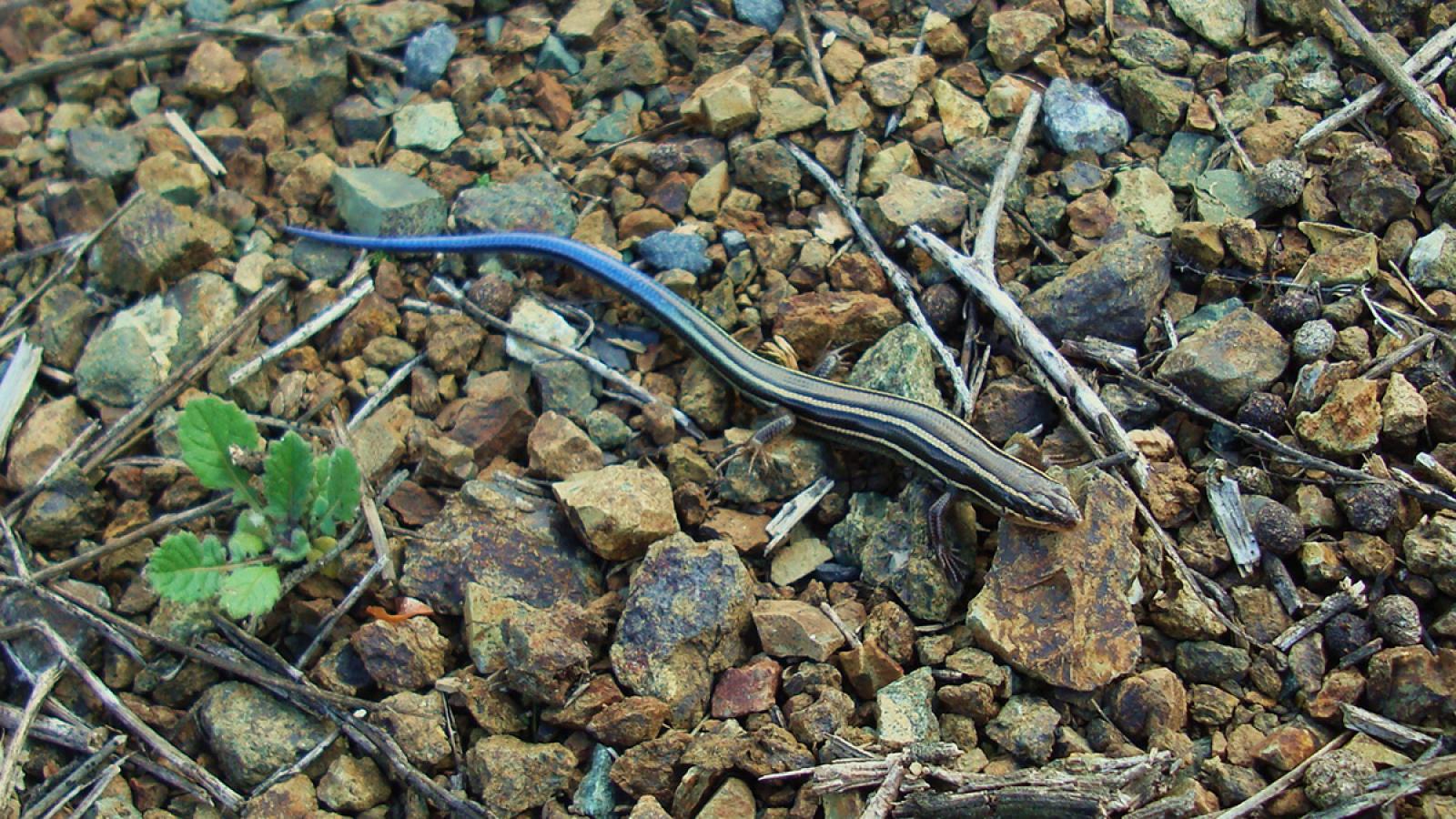As the weather warms up, more reptiles will be out and about as the heat stirs them from their winter torpor (dormancy). You may see them scurrying across the trail, sunning themselves on rocks or scrambling through the brush in pursuit of their prey. Here are some of the lizards that you may see while you are out and about this summer:
Western fence lizard
Along the trails at Midpen open space preserves, the most common reptile you will see is the western fence lizard (Sceloporus occidentalis). These lizards are often found sunning themselves on the trail, or on stumps, logs and fence posts (which is how they get their common name). They can be easily identified by their bright blue bellies!
But did you know that these lizards are disease-fighting superheroes? Lyme disease incidence is much lower in areas where these lizards are found. A certain protein in these lizards’ blood kills the bacterium that causes Lyme disease. When ticks feed on a western fence lizard, the Lyme infection is cleared from the tick and therefore cannot be passed on to us humans. Thanks for your help, little lizards!
Alligator lizard
You’re also likely to see either of two species of alligator lizard here: the California alligator lizard (Elgaria multicarinata multicarinata), a subspecies of the southern alligator lizard, and the San Francisco alligator lizard (Elgaria coerulea coerulea), which is a subspecies of the northern alligator lizard. Both species are brownish gray with dark crossbands. San Francisco alligator lizards occasionally have white spots. Both species also have yellow eyes, blocky heads and very long tails – often twice the length of their bodies.
They tend to require slightly more humid conditions than other lizards, and can often be found in forests, riparian areas and dense scrub. They can adapt so somewhat developed environments as well and can often be found in rocky retaining walls or underneath overturned pots. They eat insects, ticks, slugs, centipedes and spiders. Yummy!
Western skink
Western skinks (Plestiodon skiltonianus) have broad brown stripes running down their backs and, most notably, a brilliant blue tail. They have scales that are much smoother and much shinier than any of the other lizards on this list! Their distinctive bright blue tails are characteristic of juvenile skinks. The color usually fades by the time a skink reaches adulthood, but some adult skinks maintain traces of blue in their tails. Males develop reddish-orange coloration on the chin and sides of the head during the breeding season.
Despite their bright coloring, they are often difficult to find. They prefer moist conditions and will spend most of their day hiding under rocks, bark and other woody debris. They are also great burrowers and can dig holes that are several times longer than their bodies.
Western whiptail
Though western whiptails (Aspidoscelis tigris) are widely distributed throughout California, they are seldom seen, as they are fast and spend most of their time in dense vegetation. If you do happen to spot one, you will likely see it walking slowly from bush to bush as it occasionally digs or scratches at the ground looking for insects.
Unlike many other lizards, which tend to employ a “wait, and then run and catch” method of hunting, western whiptails are active foragers. They spend a lot of time searching for their food, digging in the soil, turning over leaf litter and sticking their heads into crevices. They are diet generalists, and will eat insects, arachnids (including scorpions!), grubs and other small animals including small lizards.
Blainville’s horned lizard
Blainville’s horned lizards (Phrynosoma blainvilli) are one of the Bay Area’s most unique native lizards; these spiky reptiles look unlike any other in the area. They have evolved a unique arsenal of defenses to protect themselves from predators. Camouflage is their first line of defense; they are hard to spot against the sand and rocks. However, if they are spotted by a predator, they will puff themselves up so that the pursuer cannot fit the lizard in its mouth. As a final line of defense, horned lizards have the unique ability to squirt foul-tasting blood from their eyes.

